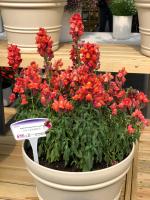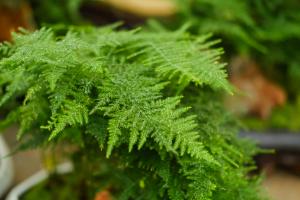Do You Fill the Water Reservoir in a Self-Watering Planter?
Self-watering planters are a convenient solution for those who love plants but often forget to water them. And unlike traditional planters, self-watering planters have a water reservoir at the bottom that automatically waters your plants for days without refilling.
Understanding Self-Watering Planters
The concept behind self-watering planters is simple. The bottom of the pot holds water, which goes up into the soil through the soil layer above. The roots of the plant will then absorb the water as needed. The water goes up into the soil through capillary action, which works just like a wick. The soil absorbs the water and keeps the plant hydrated.
Filling the Water Reservoir
Now, the question is, how do you fill the water reservoir in a self-watering planter? The answer is simple. You don’t have to fill it all the time as the water reservoir is designed to hold enough water for several days or even up to a week or more. However, you do need to fill it from time to time, depending on the size of the reservoir.
Before filling the reservoir, make sure that your planter doesn’t already have enough water. You can check it by lifting the planter and feeling its weight. If it’s still heavy, then it means that it still has water in the reservoir.
To fill the reservoir, look for the water fill hole located at the side or bottom of the planter. Most self-watering planters have a water level indicator that tells you when the water is too low. If your planter doesn’t have this feature, you can use a wooden stick to check the water level. Insert the stick into the soil and remove it. If the stick is dry, then it’s time to refill the reservoir.
Tips for Filling the Reservoir
When filling the water reservoir, avoid overfilling or underfilling it. Most planters have a maximum and minimum water level, so make sure to follow the instructions carefully. Overfilling can lead to root rot, while underfilling can make your plants dry out and die.
It’s also essential to use the right water quality. Tap water may be sufficient, but some plants may need distilled, filtered or rainwater to thrive. You can check the plant’s specific watering needs to ensure you are providing the right amount and quality of water.
Cleaning the Water Reservoir
Finally, when filling the water reservoir, make sure that it’s clean. Over time, dirt, mold, and algae can develop in the reservoir and clog the plant’s roots. To prevent this, you can completely empty the reservoir and clean it using water and a mild detergent. After cleaning, rinse thoroughly to get rid of any soap residue and refill the reservoir with fresh water.
Conclusion
Self-watering planters are an excellent choice for those who love plants but are busy or forgetful. When using self-watering planters, it’s important to understand how they work and how to fill their water reservoirs properly. Follow the tips discussed above, and your plants will stay healthy and hydrated for weeks to come.

 how many times do yo...
how many times do yo... how many planted tre...
how many planted tre... how many pine trees ...
how many pine trees ... how many pecan trees...
how many pecan trees... how many plants comp...
how many plants comp... how many plants can ...
how many plants can ... how many plants and ...
how many plants and ... how many pepper plan...
how many pepper plan...































